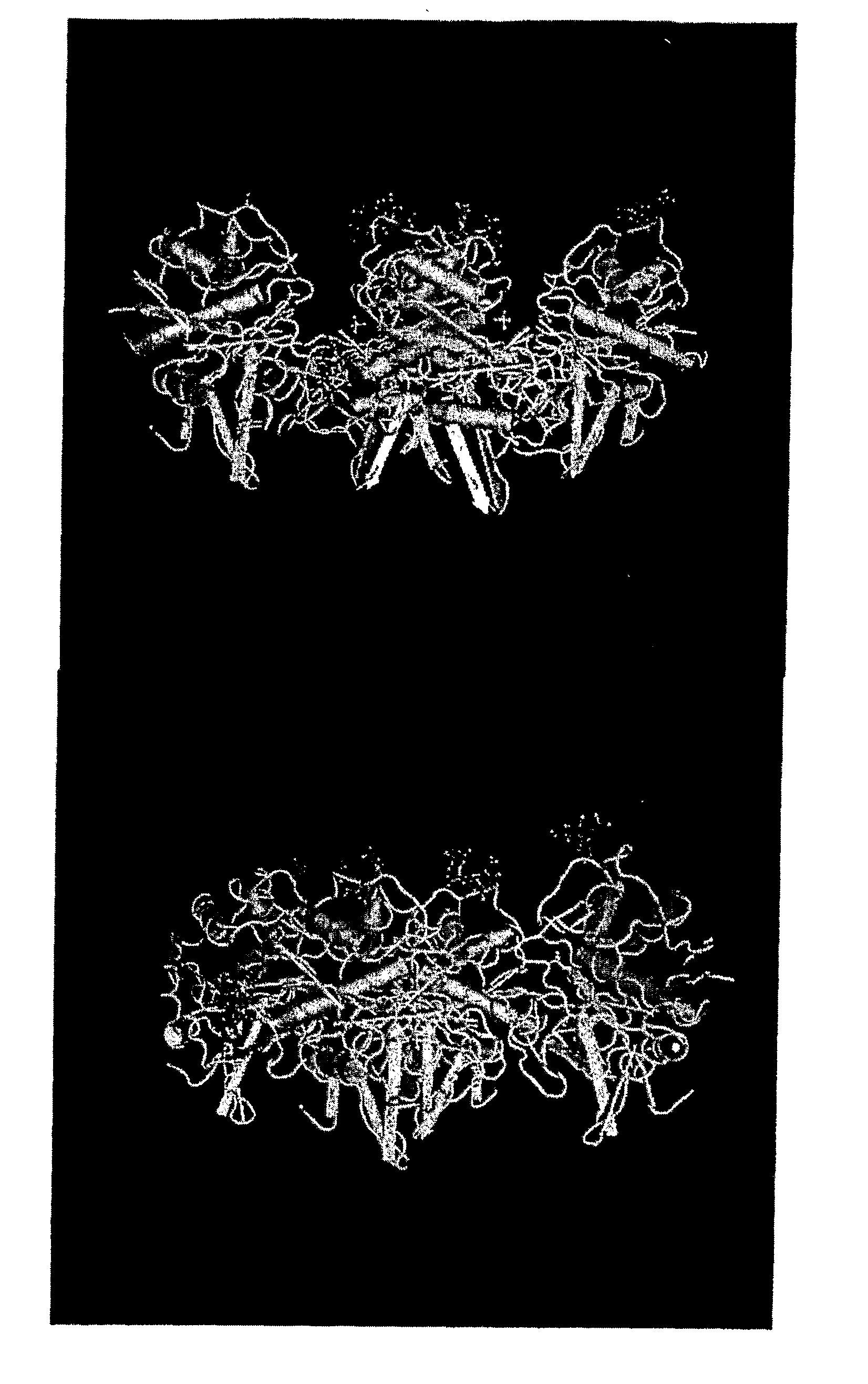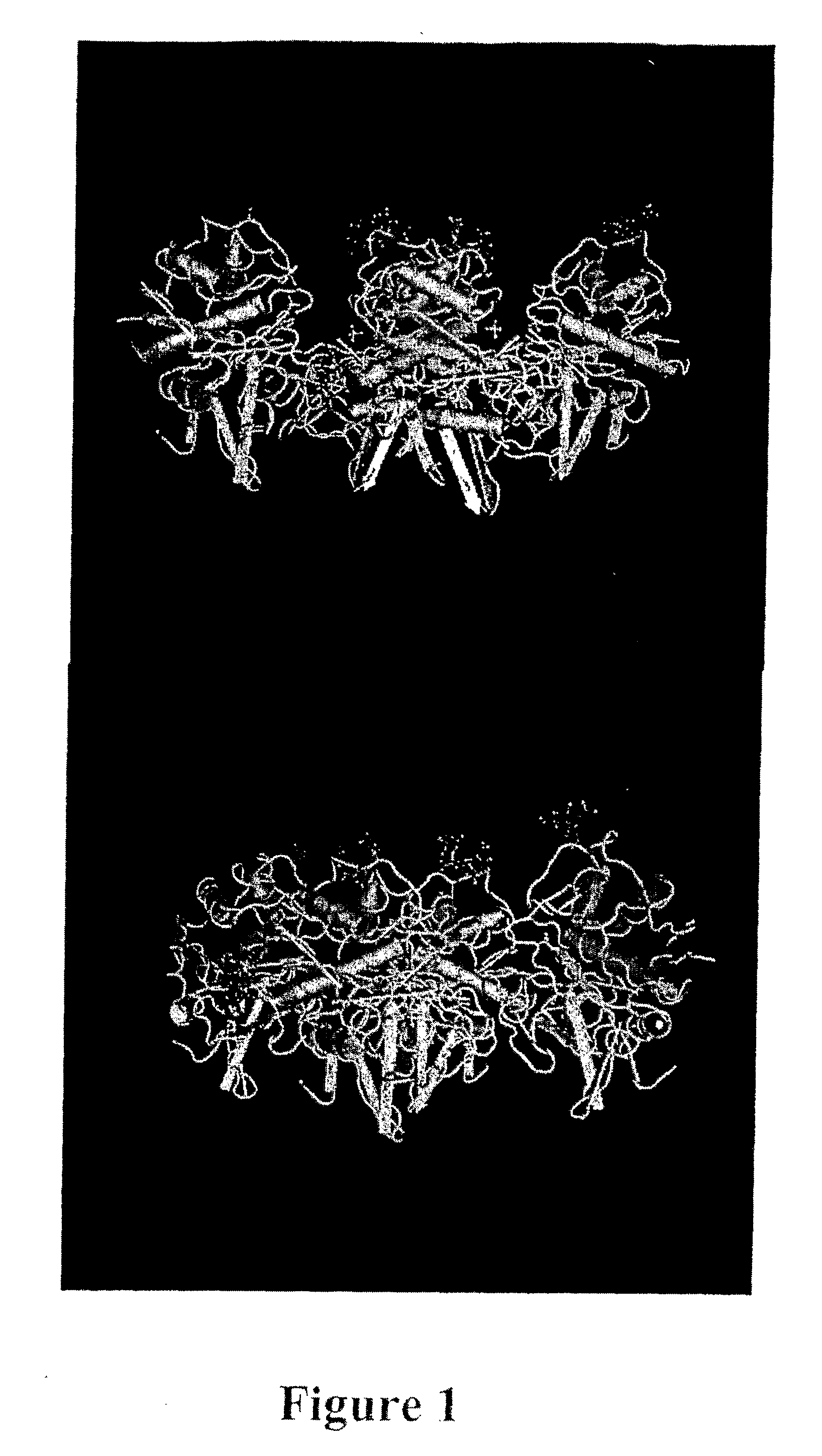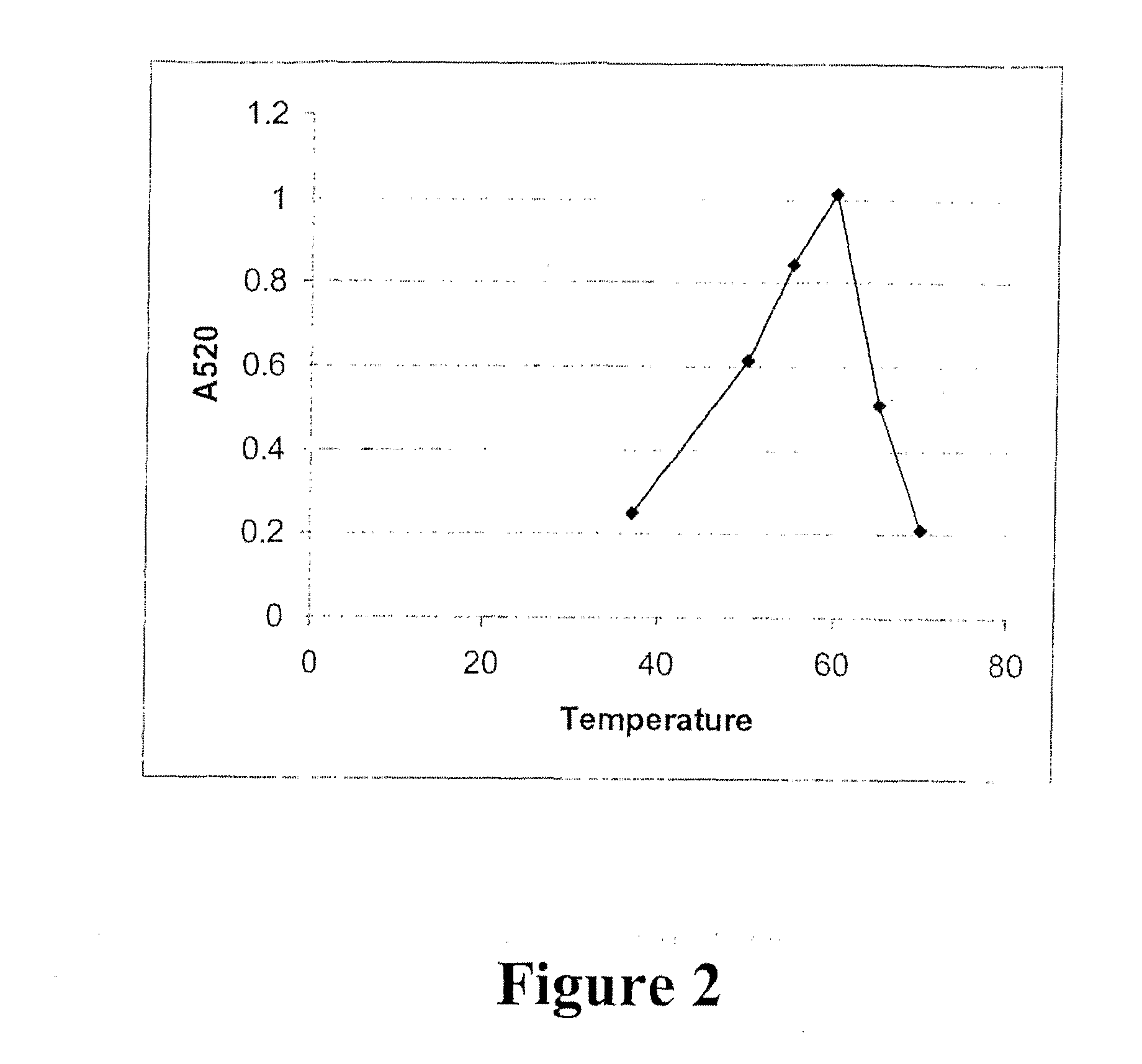Cysteine Protease from Ginger (Zingiber) as a Food Improver and Anti-Inflammatory
a technology of cysteine protease and ginger, which is applied in the field of plant extracts, can solve the problems of reducing the ability to digest wheat, the lack of consistent and reproducible trial data, and the inability to reliably hydrolyze such a target, and achieves the effect of improving the efficiency of hydrolysis and fermentation and ensuring the stability of the targ
- Summary
- Abstract
- Description
- Claims
- Application Information
AI Technical Summary
Benefits of technology
Problems solved by technology
Method used
Image
Examples
example 1
Zingibain Protein Fraction
[0160] A protein fraction is extractable from ginger rhizome with phosphate pH6 buffer (Thompson et al., J. Food Sci. 38: 652-655; 1973; Ichikawa et al., J. Jpn. Soc. Food Nutr. 26: 377-383; 1973; Ohtsuki et al., Biochim. Biophys. Acta 1243: 181-184; 1995;). This fraction contains three closely related proteolytic enzymes that may be separated using DEAE-cellulose chromatography into two bands, GP-I containing two enzymes and GP-II containing one enzyme (Ichikawa et al., 1973, supra). These three enzymes, each with a molecular weight of about 29,000 Da, can be precipitated from the extract with acetone or ethanol leaving some small contamination from two proteins with molecular weights of 14,000 and 10,000 Da. The dominant component of GP-I has 82% homology with GP-II, and the key amino acids for proline specificity are conserved.
[0161] The sequence and structure of GP-II have been determined (Choi et al., 1999, supra; Choi and Laursen, Eur. J. Biochem. 2...
example 2
Hydrolysis of Collagen by Zingibain
[0166] Collagen is the most abundant protein in humans, accounting for about 25% of protein, and its structure is largely conserved in the animal kingdom from the most primitive animals to humans. It is expressed in fibroblast cells. It forms the organic mass of skin, tendon, blood vessels, bone, the cornea, vitreous humor of the eye, and basement membranes. It polymerizes into a triple-stranded helix with each strand over 1,000 amino acids. The major form of collagen in most species is designated as collagen I and has two α1(I) chains and one α2 chain, [α1(I)]2α2. Cartilage collagen has the structure [α1(II)]3, and collagen that occurs in various tissues, especially embryo tissue, has the structure [α1(III)]3. Collagen is very rich in proline and hydroxyproline. Collagen proteins have an extremely high number of sites with the right combinations of amino acids for hydrolysis by Zingibain, but the three-dimensional structure especially the tight h...
example 3
Hydrolysis of Prion Proteins by Zingibain
[0173] Proteinaceous infectious agents, known as “prions”, have been identified and characterized over the past two decades. These infectious agents are known to be the causative agent in the spongiform encephalopathies, such as: [0174] Bovine Spongiform Encephalitis (BSE), or Mad Cow Disease; [0175] Scrapie, the disease of sheep and goats; [0176] Creutzfeldt-Jakob Disease of humans, of which 10-15% of cases are due to heritability while some cases are caused inadvertently through operation infection, and perhaps through blood transfusions; [0177] Gerstmann-Straussler-Scheinker Disease; and [0178] Fatal Familial Insomnia.
[0179] They consist mainly, if not exclusively, of a protein called prion protein (designated PrP). It is known that one form of PrP causes the disease (PrPsc), and a second form (PrPc—the normal form) does not.
(a) Prion Structure
[0180] The difference is apparently caused by a conformational change in the protein structu...
PUM
| Property | Measurement | Unit |
|---|---|---|
| Water content | aaaaa | aaaaa |
| Water content | aaaaa | aaaaa |
| Volume | aaaaa | aaaaa |
Abstract
Description
Claims
Application Information
 Login to View More
Login to View More - R&D
- Intellectual Property
- Life Sciences
- Materials
- Tech Scout
- Unparalleled Data Quality
- Higher Quality Content
- 60% Fewer Hallucinations
Browse by: Latest US Patents, China's latest patents, Technical Efficacy Thesaurus, Application Domain, Technology Topic, Popular Technical Reports.
© 2025 PatSnap. All rights reserved.Legal|Privacy policy|Modern Slavery Act Transparency Statement|Sitemap|About US| Contact US: help@patsnap.com



